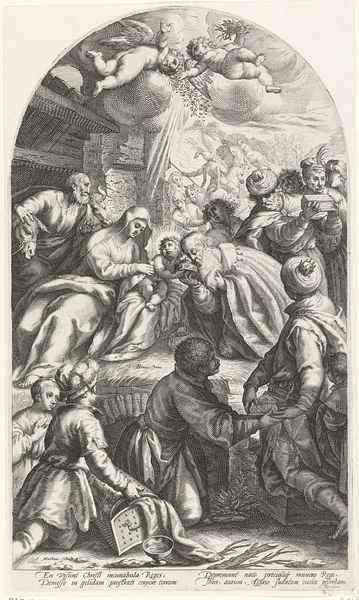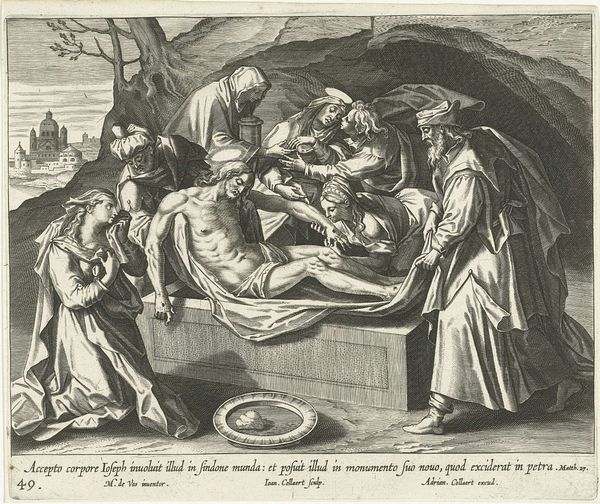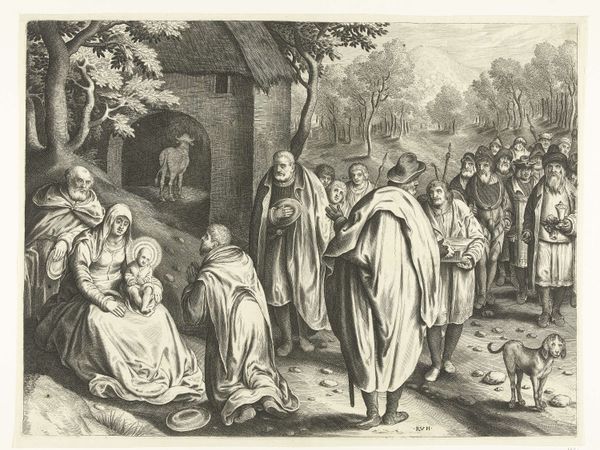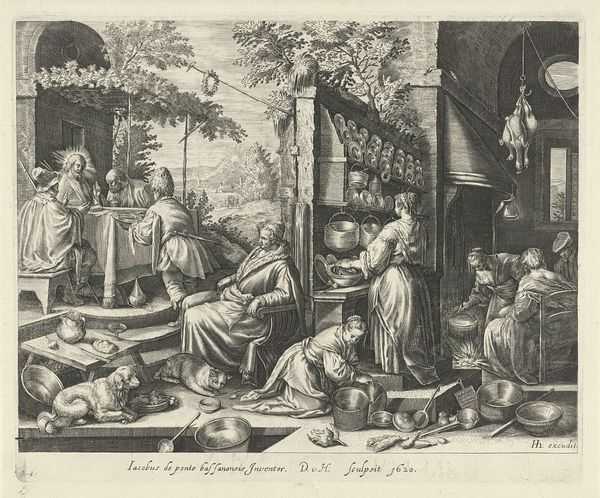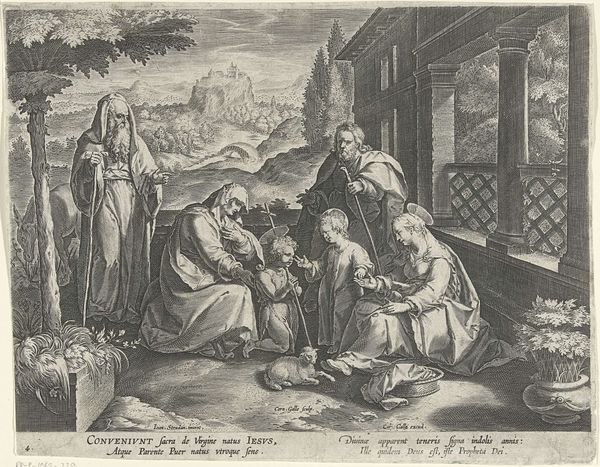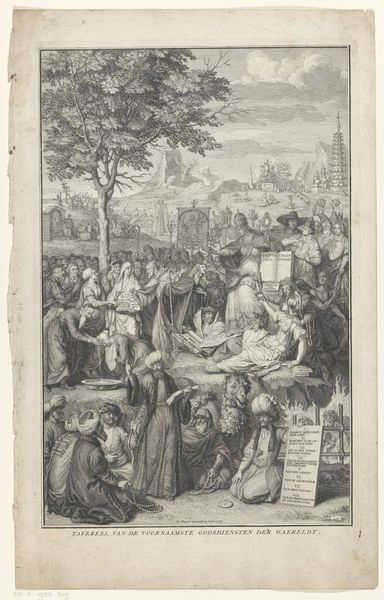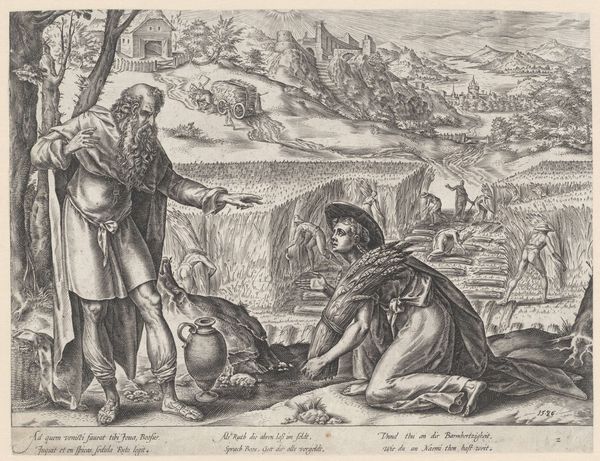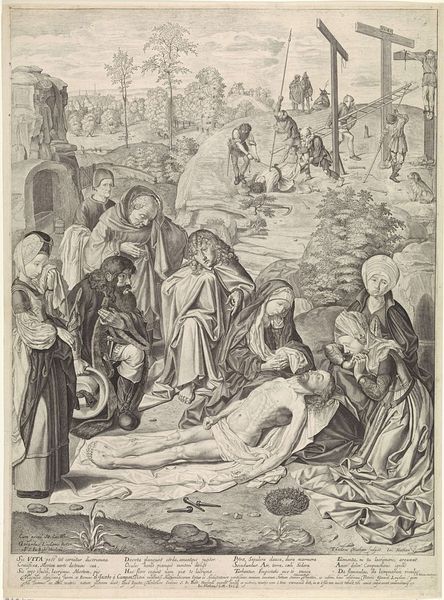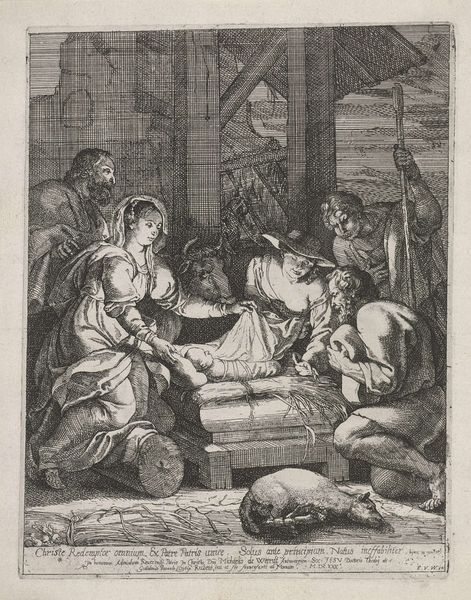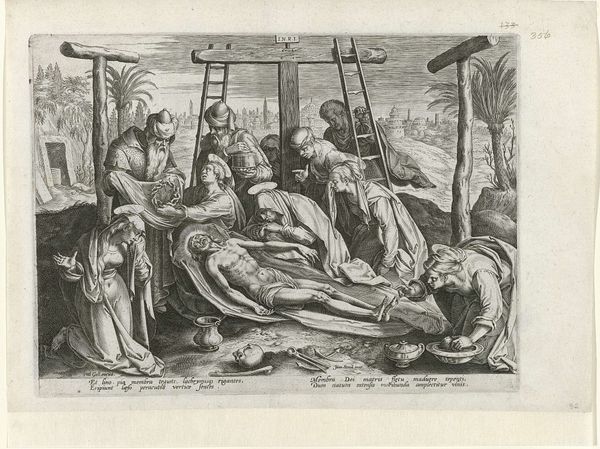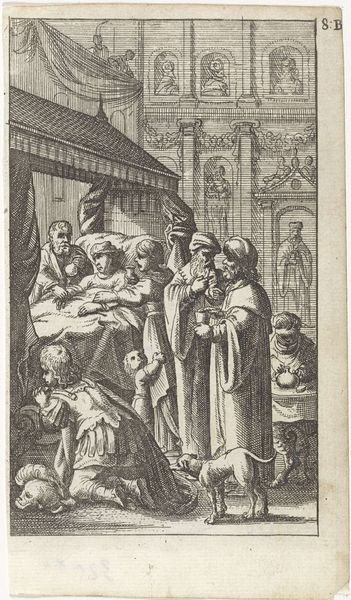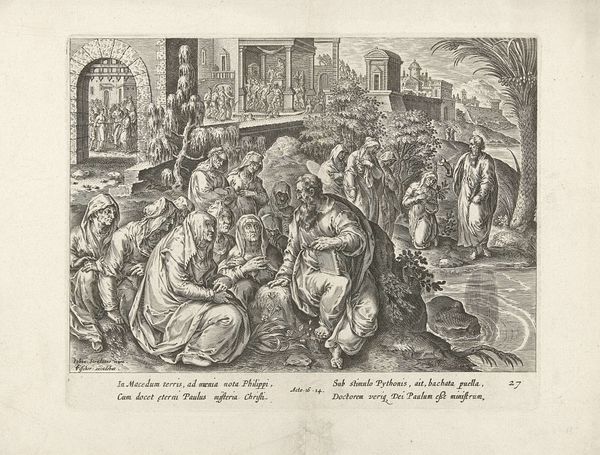
print, engraving
# print
#
figuration
#
line
#
history-painting
#
northern-renaissance
#
engraving
Dimensions: height 194 mm, width 264 mm
Copyright: Rijks Museum: Open Domain
Philips Galle made this print, Graflegging van Christus, from an engraving on paper sometime before 1612. Engraving is an intaglio process, meaning the image is incised into a metal plate, which then holds ink. Look closely, and you can see how Galle used finely controlled lines to create a full tonal range, from the deepest shadows to the lightest highlights. The act of engraving itself demanded immense skill, and rigorous training. In Galle's time, printmaking was crucial for disseminating images widely, acting as a kind of pre-modern photography. It was also a sophisticated commercial activity, with workshops organized around division of labor. This particular print, depicting the burial of Christ, would have served not just as a devotional image, but also as a testament to Galle’s own virtuosity. His ability to translate the drama of the scene through the precise and exacting work of engraving. It's a reminder that even seemingly "simple" prints are the product of deep artistic skill and complex social conditions.
Comments
No comments
Be the first to comment and join the conversation on the ultimate creative platform.
